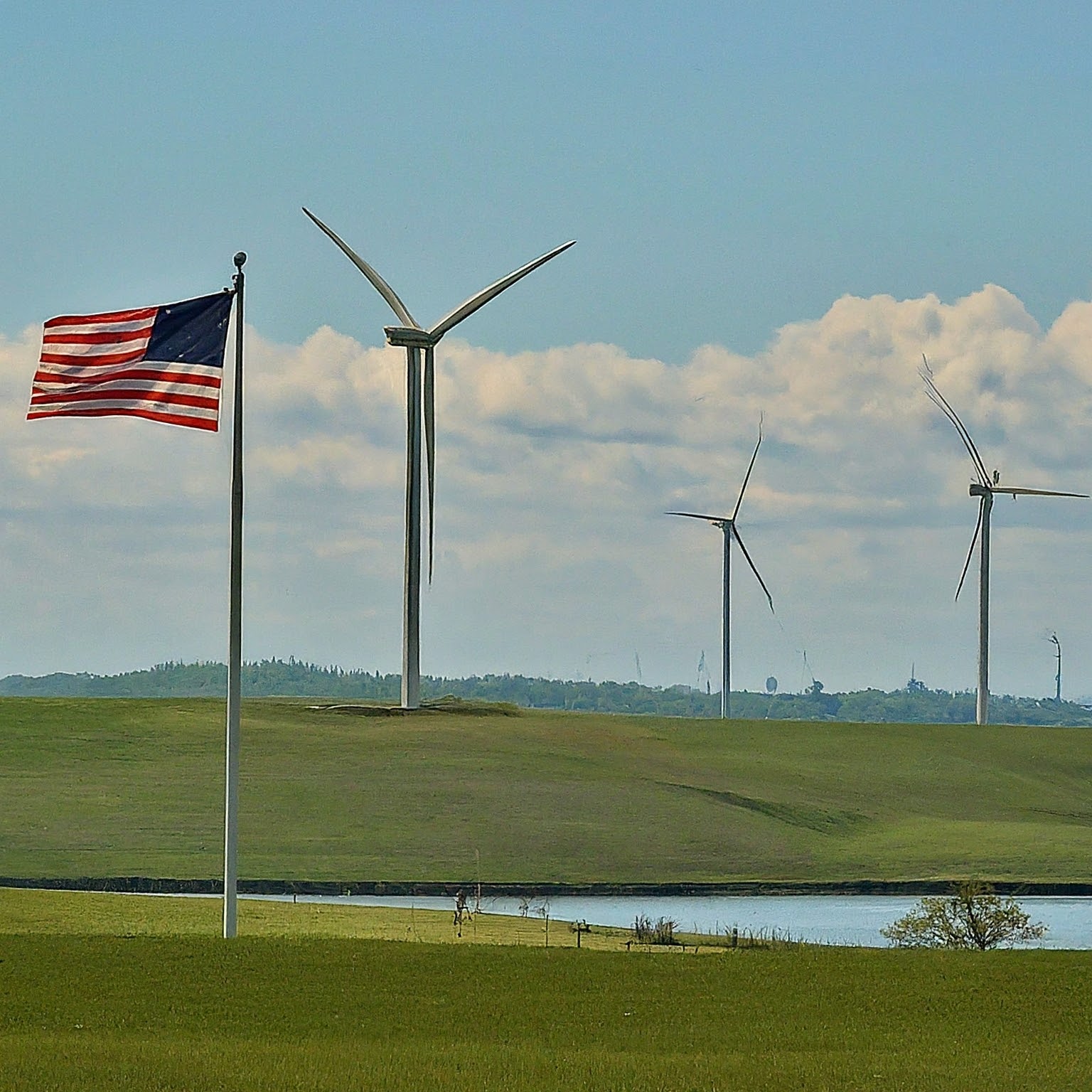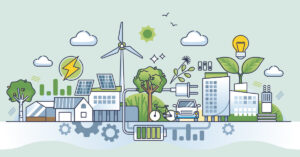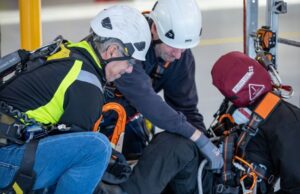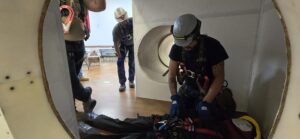The US wind industry is growing rapidly, so what do we need to consider to ensure a robust future?
The wind industry in the United States has experienced significant growth and development over the past few decades. Here is a summary of its current state:
Growth and Capacity
- Installed Capacity: As of 2023, the U.S. has over 140 GW of installed wind power capacity. This capacity is expected to continue growing as more projects come online.
- Annual Additions: In recent years, the U.S. has been adding around 10-12 GW of wind capacity annually. This trend is driven by both onshore and offshore wind projects.
Economic Impact
- Job Creation: The wind industry supports over 120,000 jobs across various sectors, including manufacturing, installation, maintenance, and support services.
- Investment: Wind energy projects attract significant investments, with billions of dollars invested annually. This includes both domestic and international investors.
Technological Advancements
- Turbine Efficiency: Technological advancements have led to more efficient and larger turbines. The average capacity of newly installed wind turbines has increased, leading to greater energy output per turbine.
- Grid Integration: Improvements in grid integration technologies and energy storage solutions are helping to address the intermittent nature of wind power, making it a more reliable energy source.
Policy and Regulation
- Incentives: Federal and state incentives, such as the Production Tax Credit (PTC) and Investment Tax Credit (ITC), have been crucial in supporting the growth of the wind industry. These incentives help reduce the cost of wind projects and make them more competitive with other energy sources.
- State Policies: Many states have set renewable portfolio standards (RPS) that require a certain percentage of energy to come from renewable sources, including wind. These state-level policies drive local demand for wind energy.
Environmental Impact
- Emissions Reduction: Wind power plays a significant role in reducing greenhouse gas emissions. It displaces fossil fuel-based power generation, contributing to cleaner air and lower carbon footprints.
- Land Use and Wildlife: There are ongoing efforts to minimize the impact of wind farms on wildlife and local ecosystems. This includes careful site selection and technology to reduce bird and bat fatalities.
Challenges
- Intermittency: The intermittent nature of wind energy remains a challenge. However, advances in energy storage and grid management are mitigating these issues.
- Supply Chain: The wind industry faces supply chain challenges, including the sourcing of materials and components. The growth of the industry depends on a robust and resilient supply chain.
- Community Acceptance: Gaining community acceptance for wind projects, especially in populated or scenic areas, can be challenging. Engagement and communication with local communities are essential for project success.
Overall, the wind industry in the U.S. is in a strong position with continued growth and development expected in the coming years. Investments in technology, supportive policies, and increased capacity are driving the industry towards a significant role in the nation’s energy mix.
The lack of wind technicians in the USA poses several significant issues for the wind energy industry. Here are the primary challenges and impacts associated with this shortage:
Key Issues
- Maintenance and Reliability
- Increased Downtime: Without sufficient technicians, routine maintenance and repairs can be delayed, leading to increased downtime for wind turbines. This reduces the overall efficiency and reliability of wind farms.
- Risk of Damage: Delays in addressing minor issues can lead to more significant damage over time, increasing repair costs and potential safety hazards.
- Economic Impact
- Higher Costs: The shortage of technicians can drive up labor costs as companies compete for a limited pool of qualified workers. This can increase the overall cost of wind energy production.
- Delayed Projects: The lack of available technicians can delay the commissioning of new wind projects, impacting timelines and potentially leading to financial losses for developers.
- Safety Concerns
- Overworked Technicians: Existing technicians may be overworked due to high demand, leading to fatigue and increased risk of accidents. Ensuring the safety of workers is a critical concern in the industry.
- Quality of Training: In an effort to fill positions quickly, there might be a temptation to reduce training duration or quality, which can compromise safety and effectiveness.
- Growth and Expansion
- Stalled Development: The expansion of wind farms may be hindered by the lack of technicians, as developers might be hesitant to invest in new projects without a reliable workforce to maintain them.
- Impact on Targets: National and state renewable energy targets could be jeopardized if the growth of wind energy is slowed due to labor shortages.
- Regional Disparities
- Rural Challenges: Many wind farms are located in rural areas where it is more difficult to attract and retain skilled workers. This exacerbates the technician shortage in these regions.
- Training Accessibility: Access to quality training programs might be limited in certain areas, making it harder for local communities to supply the needed workforce.
Addressing the Shortage
- Education and Training Programs
- Expand Programs: Increasing the number of wind technician training programs at technical schools and community colleges can help meet demand.
- Partnerships: Collaboration between the wind industry and educational institutions can ensure that training programs align with industry needs and standards.
- Attracting Talent
- Awareness Campaigns: Promoting the benefits and opportunities of a career as a wind technician can attract new talent to the field.
- Incentives: Offering competitive salaries, benefits, and career advancement opportunities can make the profession more attractive.
- Retention Strategies
- Work-Life Balance: Implementing policies that support work-life balance can help retain existing technicians and reduce turnover.
- Continuing Education: Providing ongoing training and professional development opportunities can enhance job satisfaction and retention.
- Utilizing Technology
- Remote Monitoring: Advances in remote monitoring and predictive maintenance technologies can reduce the physical demand on technicians and optimize their use.
- Automation: Incorporating automated systems for routine inspections and minor repairs can alleviate some of the burdens on human technicians.
- Policy Support
- Government Initiatives: Federal and state governments can support workforce development initiatives, including funding for training programs and incentives for hiring and retaining technicians.
- Regulatory Support: Streamlining certification and licensing processes for wind technicians can make it easier to enter and progress in the field.
By addressing these issues through targeted strategies and investments, the wind industry can mitigate the technician shortage and continue its growth trajectory, contributing to a more sustainable energy future.
We asked one of our value clients for their thoughts.
“I’m quite confident in the short term of the wind industry (20 – 30 years) however long term is to be determined. I believe wind will always have a place in the energy sector however new technologies are always being explored and maybe the next generation will call for something different, as we did from the coal generation. My father spent his career building coal fired power plants and they were the energy heroes of the day, especially during the energy crises. People are always looking for new and improved ways to be more ecofriendly and energy efficient and want to be part of change. I’m excited where we go from here as maybe we are the steppingstone to the next big thing.”
The STL USA view
We’re excited for the future of wind in the USA. However, we as an industry, especially in the short term, need to do much more to attract the committed skilled workers the sector will need to flourish over the coming years. The industry hasn’t historically done a great job of promoting the careers on offer, it’s led to a supply/demand imbalance in terms of workforce and is perhaps one reason why salaries on offer are so high. Despite this however it’s a great industry to get into, with stable jobs, advancement opportunity, and a bright future. STL USA are committed to playing are part to attract the next generation of wind technicians with programs like WindStart and we’re excited to see what the future brings.
Want to Get Into Wind?
Click the button to learn more




